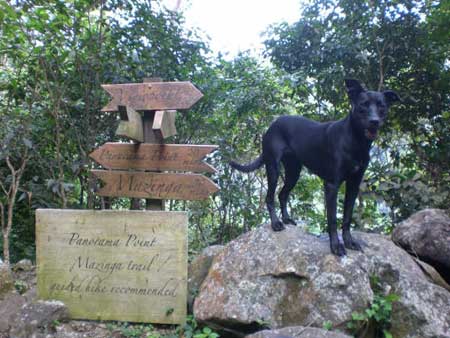At the end of this school-tear 27 children graduated from the Buzzy Bees Day Care Centre. They all move to cycle 1 in different schools. They participated in a new program that started in March 2007: the High Scope Program.
What is this High Scope Program?
Mrs. Cantica Smith explains: “With High Scope, we teach the children to be independent. High Scope starts with one year old children. It offers them a structured program, with activities that return every day. This High Scope program is implemented all over the world. Research shows that children that started their school career with High Scope end up with a higher education and less delinquency”.

Cantica Smith, trainer, Rita Hassell, director of ‘Buzzy Bees’ and Debby Brown, resource teacher
What is the secret of this method? First of all it’s the mixed age groups. Buzzy Bees has 4 mixed age groups. Children from 2 to 4 years attend these groups. The bigger ones assist the smaller ones. The other thing that is very important with High Scope is that the behavior of the teachers is different than before. “Teachers are not talking AT the children, they are talking TO the children”. That means that the teacher no longer tells the children what to do, the children carry out different activities and the teachers assist them. This is what helps the children to become more independent.
Good feedback
Mrs. Rita Hassel, the director of Buzzy Bees Day Care Center gets good feedback from the parents. “As the children go home, it’s less of a struggle for the parents to get their children to do something”. “Parents really notice the difference in their childs’ behavior”.

“Hey, man! Make up your mind! Where are you headed?”
Signs of various trails on the Quill, Statia’s highest hill.
Photo by Marco Coenen.
Mrs. Cantica Smith “trains the trainers”.She is now precertified to be a trainer of the teachers who work with children in the High Scope Program. In October she will do her final exams to finish her training. All trainers from the Netherlands Antilles come together from time to time to attend workshops. One of the things Cantica Smith talks about is how to deal with children who have a conflict.

The long awaited Graduation Day has finally arrived ...
Six steps of problem solving
Because this is also something you can do at home, with your own child, it is good to know about the “six steps of problem solving”:
Situation: Sammy takes Trisha’s doll. Trisha starts to cry and hits Sammy.
Step 1: Approach calmly and stop any hurtful actions. It is important that you remain calm, then the children regain control.
You take the doll and say that hitting and name calling has to stop. You say to the children: “I keep the doll so you can calm down and we can try to solve the problem”.
Step 2: Acknowledge children’s feelings.
Helping the children to express their feelings - and accepting their feelings without judgment - allows children to let go of their emotions. You say: “I can see you are very angry. Are you upset that he took your doll?”
Step 3: Gather information.
In gathering information, never ask “why” questions. Little children find it difficult to answer those questions, they have no concept of “why”…
You don’t say: “Why did you take that doll?”, but you investigate: “Whose doll is it?” or “Are you jealous of Trisha that she has a doll?” or “Do you want a doll for yourself?” When asking those kind of question, the children calm down.
Step 4: Restate the problem
When you say: “So the problem is..”, the children know that you are really listening to them and have no judgment. You say: “So you both want to have a doll…”
Step 5: Ask for ideas for solutions and choose one together.
See if you can get the children to come up with solutions for their problem. Maybe there is another doll for Sammy, or maybe they want to take turns in playing with the doll.
Step 6: Give follow-up as needed.
You may help the children to carry out their solution of the problem. If the problem remains, try and find another approach with them (repeat the whole process)